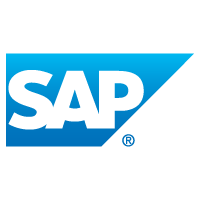Everything you need to know about ERP: A beginner’s guide
Right from its definition to implementation practices, experts answered the most common questions about cloud ERP.
Even before the pandemic struck, enterprises were looking at technologies like cloud ERP rather keenly. The interest became a necessity in the pandemic years, with migrating to cloud ERP being more urgent than ever. As per reports, the global cloud ERP market can reach a valuation of $277 million by 2032 from $63 million in 2022, growing at a rapid rate of 16 percent in the period.
There are various reasons for this trend to take off - the impact of COVID-19 on businesses, the need for agility, flexibility, and greater efficiency in operations, and the growing dependence on cloud-based tools. As cloud ERP becomes more and more essential, we spoke to SAP experts to give us further clarity on some common questions and doubts enterprise leaders have.
Edited excerpts from the interview:
YourStory: Migrating to the cloud has become essential for enterprises looking at being future-ready. But what is cloud ERP?
Experts: ERP means ‘enterprise resource planning’. An ERP system, also called an ERP suite, is made up of integrated modules or business applications that talk to each other and share a common database. It is responsible for the efficient management of various departments - right from finance, manufacturing, HR, supply chain, services, procurement, and others. It is often referred to as the system of record of the organisation, sometimes even the ‘central nervous system’ of an organisation.
Today’s ERP are delivered on the cloud and use the latest technologies such as artificial intelligence (AI) and machine learning to provide intelligent automation, greater efficiency, and instant insight across day-to-day operations of the business. And when we say day-to-day operations, we truly mean that each department needs it – finance requires an ERP to quickly close the books, sales needs ERP to manage all customer orders, logistics relies on well-running ERP software to deliver the right products and services to customers on time, accounts payable needs ERP to pay suppliers correctly and on time, management needs instant visibility into the company’s performance to make timely decisions, and banks and shareholders require accurate financial records, so they count on reliable data and analysis made possible by the ERP system.
YS: What are the core features of ERP? How do they add value to India’s mid-market companies?
E: Cloud ERP is here to stay, and we know that because of the growing adoption rate. As per G2, the global ERP software market is projected to reach US$78.40 billion by 2026, growing at a CAGR of 10.2 percent from 2019 to 2026. And the reason for this growth stems in the advantages that come with the ERP system.
It helps with:
- Complete visibility: ERP makes data from each department accessible to every member of the organisation.
- Better insights and planning: A unified reporting system helps generate useful reports and analytics. It helps eliminate information silos, gain a single source of truth, and get fast answers to mission-critical business questions.
- Improved agility and productivity: ERP reduces manual processes, helping teams focus on other work. Access to real-time data can help businesses quickly identify and react to new opportunities.
- Less risk: One major benefit of ERP is data security, which remains a critical component. The system manages who can view and edit information. It maximises business visibility and control, ensures compliance with regulatory requirements, and predicts and prevents risk.
- Easy way to work: By using integrated ERP applications that share a database, you can simplify IT and give everyone an easier way to work.
YS: Transitioning to an ERP system is a big move. When should enterprises move to ERP and what strategies should they keep in mind for successful implementation?
E: ‘When do you need a modern ERP system?’ is an important question in today’s time. To answer it, businesses must ask themselves a few questions too, such as ‘Are you spending too much time on activities?’, ‘Do you have many unanswered business questions?’, ‘Do your business processes need restructuring?’, ‘Do you have manual processes with multiple data sets?’ and ‘Are you missing out on opportunities which could be avoided with predictive analysis?’ If your answer is yes, then you need to opt for an ERP system.
Coming to implementation, the first thing is to recruit an implementation team. If the team isn’t skilled enough, the project will suffer from delays, additional costs, etc. Additionally, enterprises must keep the following in mind:
Outline your business goals: Narrow the scope for the first phase of implementation, and outline your business process goals and the KPI you want to achieve.
Find a partner with deep expertise: Not all in-house teams are experienced. So enterprises must find a good software partner that has staff trained as per different industries and available for your locations. If you have international customers, your partners should have that exposure as well.
Detail your tasks: The list of tasks should be divided up into phases - right from training the various teams to integration to other applications. Enterprise leaders must work closely with their ERP partners to allocate time for these. Calculate a timeline for the implementation and then create a realistic schedule.
Focus on user experience: Ensure that the team understands the solution. Get their feedback early so that you can make user experience a top priority and make ample time for on-boarding and training.
Conduct a conference room pilot: To ensure that you have the proper business processes in place, conduct a test run or a pilot before full roll-out.
Check integration: Ensure that your solution can be easily integrated with other applications and can be easily extended as your requirements grow.
YS: As per a recent survey, 63 percent of businesses selected cloud ERP software over on-premise ERP. But how can enterprises evaluate their ERP systems since there are so many to choose from?
E: Each ERP module supports specific business processes – like finance, procurement, or manufacturing – and provides employees in that department with the transactions and insight they need to do their jobs. Companies can pick the module they want and add on as needed. The ERP software can be bought using a cloud subscription model (software-as-a-service) or a licensing model (on premise). But there are things that enterprises need to consider before going the cloud ERP route - the first step would be to define your challenges and requirements, then find renowned ERP providers with a global reach, an ROI analysis could also help, compare ERP demos from company to company to understand functionality, technology, and performance. And finally, ensure that your partner has deep industry knowledge to help you find the right-sized ERP solution for your business.
YS: How do enterprises decide if their current system is working for them or if they need an upgrade? What signs should they watch out for?
E: There are some features that are an absolute necessity in an ERP suite, so it is essential to check if yours has these – a common database, built-in analytics, visual representation of data with dashboards, automation of repetitive tasks, consistent UI/UX, seamless integration of business processes, supports new technologies like AI/ML, IoT, a fast and stable technology stack – including a low-code/no-code platform, iPaaS, data management, and more, multinational support and choice of deployment, be it cloud, on-premise, or hybrid.
YS: What are the unique advantages SAP is offering to India’s mid-market enterprises?
E: SAP S/4HANA Cloud is the company’s intelligent ERP system with built-in intelligent technologies, including AI, machine learning, and advanced analytics. Through it, companies can adopt new business models, manage business change at speed, orchestrate internal and external resources, and use the predictive power of AI. Enterprises can benefit from the in-memory database and simplified data model, consumer-grade UX and personalised insights and the support of a steady partner like SAP.
For more information,








